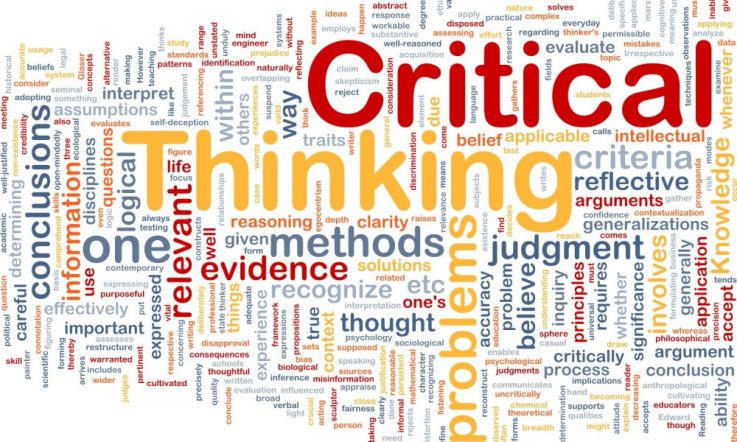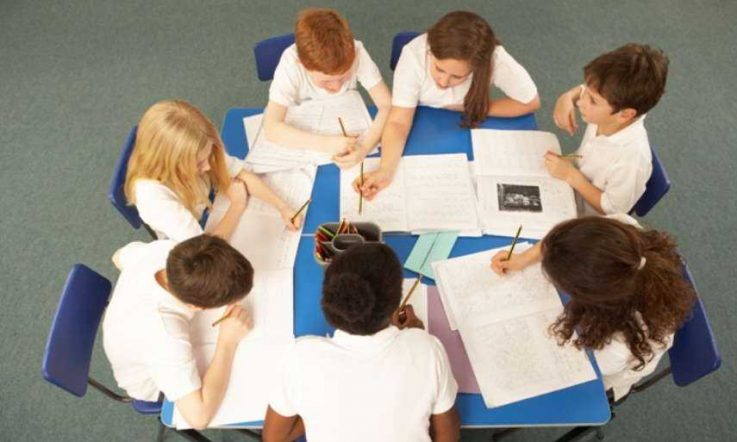This is an edited version of an article that was originally published in the March 2011 print edition of Teacher.
Do you ever ask yourself, when you’re teaching, how much are my students taking in; is there a better way for them to learn the same material; are they really learning to think for themselves and developing skills that will be useful later in life?
It was the pursuit of deep learning, beyond absorbing and regurgitating information, that led to the development of problem-based learning in educational settings. Its basic rationale is to develop skills for solving real-life problems.
In approach, it moves away from traditional ‘facts-based’ teaching.
In essence, problem-based learning involves giving groups of students an unstructured problem with little other information. They are expected to produce and justify a solution in the time available. This requires students to work together, listen to opinions, collect information and consider different possibilities.
The problem is designed to engage the students, allowing them to set parameters and investigate within these. Thus the learning is self-directed, and the role of the teacher changes significantly from a knowledge provider to a coach or guide.
Key benefits
By introducing problem-based learning to secondary education we can foster analytical thinking skills in our students. The key benefit of problem-based learning is that it develops students who are able to collaborate, solve problems, think clearly and connect prior knowledge to a problem.
Don Margetson, quoted in Hildebrand, Mulcahy, & Wilks (2001) concludes that problem-based learning encourages students to be ‘open minded, reflective, critical’ and to ‘undertake active learning.’ It gives them an opportunity to make what they learn meaningful and to develop strategies they will be able to use to solve problems in the future, irrespective of subject matter.
Higher-order thinking skills
Higher-order thinking skills should be taught as part of any curriculum. Typically, students view learning as remembering facts, terms and definitions, but it’s actually the case that problem-based learning builds their skills in doing that because it teaches students to develop thinking skills such as the ability to evaluate, generalise, hypothesise, synthesise and analyse information rather than simply recall it.
Collaboration
In all aspects of life after school or university, individuals are required to work in teams. Working in groups requires fundamental skills such as listening, cooperating, negotiating and communicating. Problem-based learning requires students to work in small teams, learning to work together effectively to complete a specific task.
Self-directed learning
We inhabit a technologically evolving world in which individuals are responsible for their own learning, if only in order to keep up with new developments. The knowledge that professionals require in the workplace is vast and continually changing, especially in the area of technology. That’s why students need not only to be able to find relevant information, but also to be able to analyse and evaluate it.
Put simply, they need to learn how to learn in order to be self-directed learners. Problem-based learning using authentic assessment helps them to do that by providing the opportunity to learn skills that can be directly applied to other environments, including the workplace.
Setting up and implementing problem-based learning
Designing a good problem
If a problem is to be tackled successfully by students, you need to spend time designing a good problem that will engage them. The problem must be real, to enable students to make connections between previous experiences and the problem at hand.
The problem must be structured so that students will cover the required content and develop problem-solving skills at the same time. It should also be sufficiently open-ended so students have the flexibility to make findings and build their own ideas into the solution.
A well-designed problem should lead to students to pose more questions that will help them solve the problem.
When I first introduced problem-based learning into my classes on human biology, having taught about the various body systems for almost 10 years, I used the simple question: How does a cell in your big toe stay alive? My hypothesis was that this question would stimulate my students to think about fundamentals like the requirements of a cell in your big toe and how these requirements get to the cell.
Problem-based learning gives students ownership of the learning because they themselves design the learning activities they’ll need to carry out to solve the problem. That’s why it has to be a real problem. It has to be something in which your students are interested and want to solve.
Establishing groups
Students in the class need to be split into small groups. The ideal group size is probably three or four students. This size allows each member to voice opinions and contribute to the group.
Students can be grouped in numerous ways, but remember you, the teacher, know your students best, so the way you group is really up to you.
Presenting the problem
The problem needs to be presented to the students in a stimulating manner, preferably one that provokes a response. You might present the problem as a short scenario or by drawing on a journal article.
With groups established and the problem presented, you need to create an environment where your students can learn effectively.
Effective learning environments and the role of the teacher
The teacher in an effective problem-based learning environment needs to act as a facilitator, be a role model, model questioning and support and encourage the students.
Your role is to encourage your students to develop thinking skills and to direct their thinking, which is not the same as providing them with the knowledge to solve the problem, but more to do with scaffolding their thinking.
You can model questioning by asking types of questions that will lead to a greater understanding of the problem. Robin Fogarty, in Problem-Based Learning, suggests students create a KND chart or list where they write down:
- what they know
- what they need to know, and
- what they don’t know.
By showing your students the types of questions they need to ask in order to begin solving their problem you can build their confidence to become more independent and self-directed learners.
Your role is also to model thinking. This is as simple as thinking aloud to demonstrate behaviour to do with evaluating, generalising, hypothesising, synthesising and analysing. Your role, further, is to model reflective thinking, to encourage your students to reflect on their learning methods as well as the content they’ve learnt.
There’s a useful model developed by Hildebrand, Mulcahy and Wilks (2001) for teachers which incorporates problem-based learning theory, which involves three phases:
Phase 1: encountering the problem;
Phase 2: ‘doing it’, and;
Phase 3: drawing it together.
The first phase requires students to brainstorm using concept maps and mind maps. Here, students should develop a series of questions that will help them find out what they already know and what they need to know. In the second phase the students move into researching the problem and trying to collect information they need to solve the problem. Finally, students sort through the information gathered and discuss with their group the outcomes and possible solutions to the problem.
This is an ideal framework for teachers to use as they begin implementing problem-based learning into their teaching and learning with their students, as the students will need much guidance. As the students become experienced with problem-based learning, they should be able to independently determine the direction they take and be less reliant on such a framework.
References
Fogarty, R. (1997). Problem-Based Learning: Other curriculum models for the multiple intelligences classroom. Melbourne: Hawker Brownlow Education.
Hildebrand, G., Mulcahy, D., & Wilks, S. (2001). Learning to teach through PBL: Process and progress. Australian Teacher Education Association Conference: Teacher Education, Change of Heart, Mind and Action. Melbourne, (24-26 September).
This is an edited version of an article that was originally published in the March 2011 print edition of Teacher. The author biography remains unchanged and may not be accurate at this point in time.



